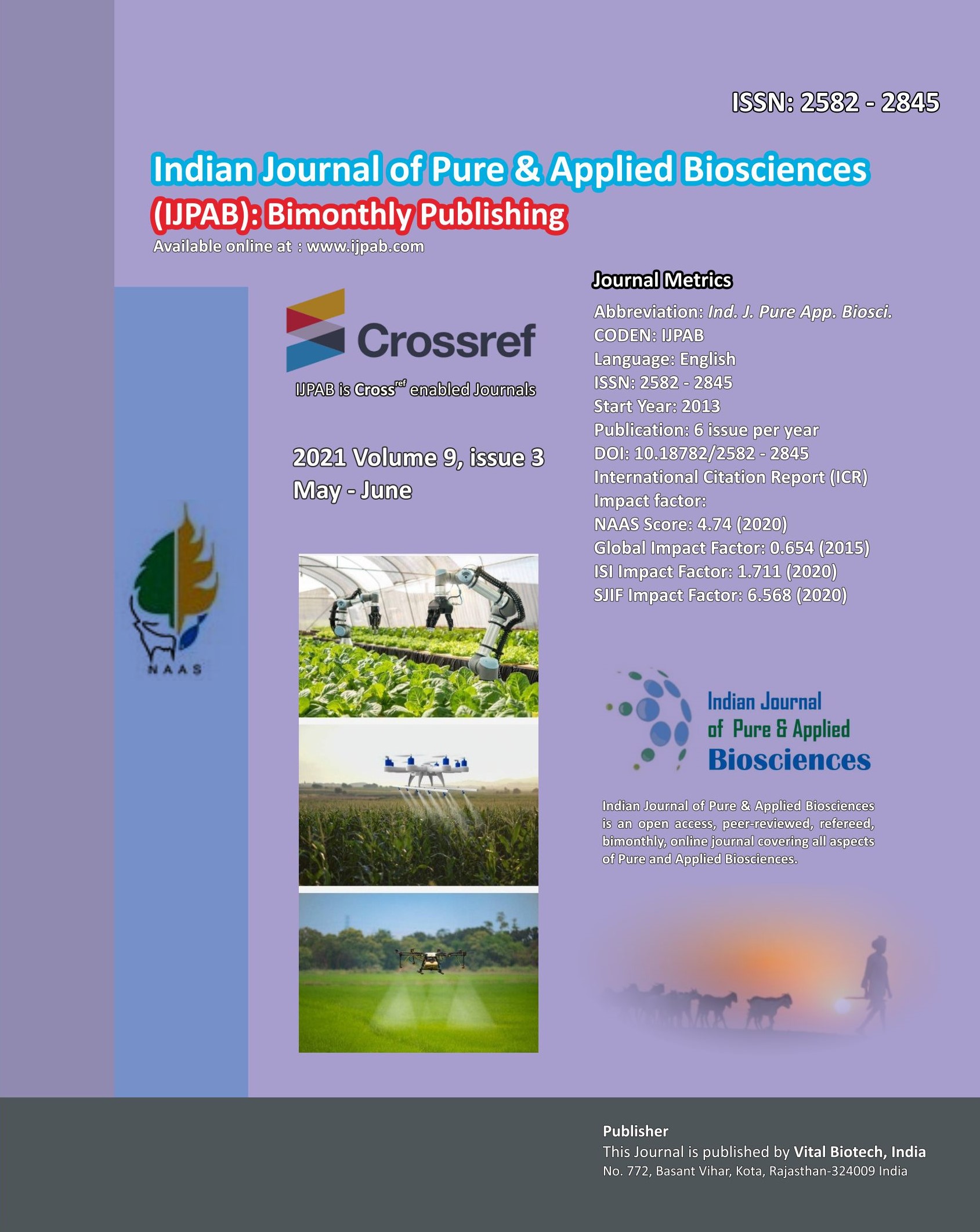-
No. 772, Basant Vihar, Kota
Rajasthan-324009 India
-
Call Us On
+91 9784677044
-
Mail Us @
editor@ijpab.com
Indian Journal of Pure & Applied Biosciences (IJPAB)
Year : 2021, Volume : 9, Issue : 3
First page : (7) Last page : (9)
Article doi: : http://dx.doi.org/10.18782/2582-2845.5206
Management of Horn Gore Injury of Vagina in a Buffalo: A Case Report
K. Manoj Kumar1* and N.M. Sharif2
1Post Graduate Student, Dept. of Veterinary Surgery & Radiology,
2Post Graduate Student, Dept. of Veterinary Microbilogy,
College of Veterinary Science, Tirupati, Andhra Pradesh, India– 517502
*Corresponding Author E-mail: manojvety12@gmail.com
Received: 15.11.2020 | Revised: 17.12.2020 | Accepted: 22.12.2020
ABSTRACT
A 6 year old murrah buffalo weighing around 350 kg was presented with the complaint of lacerated wound in the vagina resulted after horn gore injury since eight hours. The area around the injury was debrided and wound was flushed properly with normal saline followed by washing with povidone iodine (5%). After stabilizing the animal, lacerated wound was closed in routine manner. The buffalo had an uneventful recovery.
Keywords: Horn gore injury, Lacerated wound, Vagina.
Full Text : PDF; Journal doi : http://dx.doi.org/10.18782
Cite this article: Kumar, K.M., & Sharif, N. M. (2021). Management of Horn Gore Injury of Vagina in a Buffalo: A Case Report, Ind. J. Pure App. Biosci. 9(3), 7-9. doi: http://dx.doi.org/10.18782/2582-2845.5206
INTRODUCTION
The injuries caused by horns of bulls, cows or buffaloes are of various shapes, sizes and directions and are goring in nature and violent. The wounds produced are contusions, lacerations, penetration of body cavities and rarely fractures. Mostly subcutaneous tissues and muscles are affected but visceral injuries are also quite frequent (Senthilkumar et al., 2014). The horns of bull are long, curved directed towards with smooth tapering ends that produces lacerations and can also penetrate the body cavities. Several management factors such as animal husbandry, housing design, and characteristics of individual cows may lead to traumatic injuries in dairy cows (Busato et al., 2001). The present case discusses successful surgical management of lacerated wound of vagina due to horn gore injury in a buffalo.
History and Diagnosis:
A 6 year old Murrah buffalo weighing 350 kg was presented with the complaint of horn gore injury. During physical examination, a 6-cm long lacerated wound was observed on the floor of the vagina with severe bleeding. The wound was appeared to be fresh but seems to be contaminated. Based on the history and physical examination, the case was diagnosed as horn goring injury as the lacerated wound could be seen on the floor of the vagina (Fig 1).
TREATMENT AND DISCUSSION
The wound was first cleaned by flushing with normal saline, followed by washing with povidone iodine (5%). The tear in the vaginal wall was scarified with a BP blade and the edges were sutured with No.2 chromic catgut (simple continuous suture) (Fig 2). A course of antibiotics and analgesics were administered for a period 5 day and 3 days respectively. Daily dressing of the suture line was performed with 5% povidone iodine until healing of the lacerated wound.
Goring is taken when the bull horn penetrates deeply in the muscles as well as body cavities. Goring is also described as a single injury which includes a mix of lacerated wound, contusion and infection by many researchers. Thus, wounds produced due to bull horn impact vary from contusions, lacerations, and penetrating wounds involving internal organs to fractures. The lacerated wound due to traumatic injury caused by horn was also reported by Rau (1982) who stated that horns of cattle or buffaloes can cause goring and violent injuries of various shapes, sizes and directions. Cases of traumatic horn injuries in animals were not widely documented. However, reports by Al-Sobayil and Ahmed (2007) and Onoja et al. (2011) were among a few cases of traumatic horn injuries reported in animals. In the present case, the vaginal floor was severely damaged along with laceration. The vagina was minimally handled during the treatment and reunion was done appropriately with catgut which aided in early recovery.
CONCLUSION
Traumatic horn injury is a common herd management problem observed in dairy herds. Cows with pointed horns may act as a source of injury to other animals in the herd. Dehorning and proper treatment of horn goring wound proved to be successful.
REFERENCES
Senthilkumar, S., Madan, M., & Mahesh, M. S. (2014). Bull Gore injury- Its impact and surgical management. Int. J. Biomed.and Adv. Res. 5, 279-280.
Busato, A., Trachsel, P., & Blum, J. W. (2001). Frequency of Traumatic Cow Injuries in Relation to Housing Systems in Swiss Organic Dairy Herds. J. Vet. Med. A. 47(4), 221-229.
Rau, J. B. V. (1982). Bull gore injuries in rural areas. Indian J. Surg. 44, 664-671.
Al-Sobayil, F. A., & Ahmed, A. F. (2007). Surgical treatment for different forms of hernias in Sheep and Goats. J. Vet. Sci. 8, 185-191.
Onoja, I. I., Mshelia, W. P., Usman, B., Andrew, A., Sambo, W. K., Muhammad, S. T., Ocheja, B. O., & Awai, D. E. (2011). Severe horn-gore injury in a 5-year-old Bunaji bull and a 10-month old Yankasa ram-lamb. Sokoto J. Vet. Sci. 9, 43-45.


